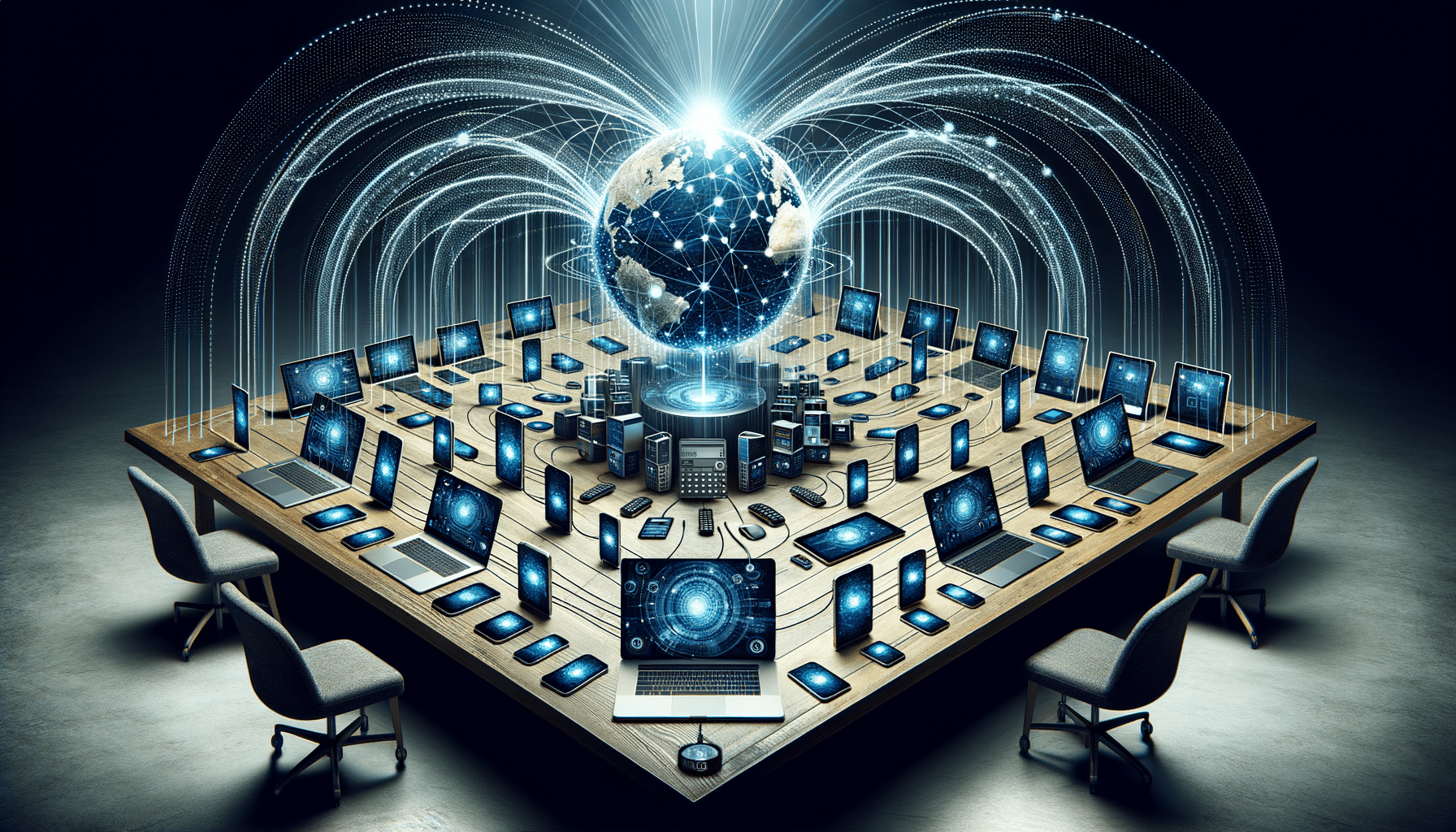Managing Devices at a Distance? Here’s What You’re Probably Overlooking
It’s not just about keeping devices online—it’s about keeping them secure, updated, and accountable. As companies expand and decentralize, remote endpoints become harder to track and easier to exploit. The problem? Most teams don’t realize what they’re missing until it’s too late. In this article, we highlight the blind spots that catch teams off guard—and how to fix them before they turn into real threats.

Understanding Remote Device Management
Remote Device Management (RDM) is a critical component in the modern business landscape, especially as companies increasingly adopt remote work models. RDM involves overseeing, maintaining, and securing devices that are not physically present in the office environment. This capability is crucial for supporting a distributed workforce and ensuring that all devices are functioning optimally and securely.
RDM systems offer several key functionalities:
- Device Monitoring: Continuous tracking of device status and performance metrics.
- Security Management: Deploying security patches and updates remotely to protect against vulnerabilities.
- Configuration Management: Ensuring devices are configured correctly to meet organizational standards.
- Remote Support: Providing technical assistance without the need for physical presence.
With the rise of the Internet of Things (IoT), the scope of RDM has expanded beyond traditional computers and smartphones to include a variety of connected devices. This evolution necessitates robust RDM solutions that can handle diverse device ecosystems. As organizations strive to maintain productivity while safeguarding sensitive data, RDM becomes an indispensable tool in the IT arsenal.
The Importance of Security in RDM
Security is a paramount concern in Remote Device Management. With devices spread across various locations, the attack surface for potential cyber threats expands significantly. Ensuring that each device is secure is not just about protecting individual endpoints but also about safeguarding the entire network.
RDM solutions typically encompass several security measures:
- Encryption: Protects data in transit and at rest on remote devices.
- Authentication: Ensures that only authorized users can access the devices.
- Remote Wipe: Allows administrators to erase data from lost or stolen devices to prevent data breaches.
- Patch Management: Regular updates to fix vulnerabilities and enhance device security.
According to a report by Cybersecurity Ventures, cybercrime is expected to cost the world $10.5 trillion annually by 2025. This staggering figure underscores the importance of implementing strong security protocols in RDM. Organizations must adopt a proactive approach, continuously monitoring devices and updating security measures to combat emerging threats.
Challenges in Implementing RDM
Despite its advantages, implementing Remote Device Management comes with its set of challenges. One of the primary hurdles is the complexity of managing a diverse range of devices, each with its own operating system and security requirements. This diversity can complicate the deployment of uniform management policies and security protocols.
Other challenges include:
- Scalability: As organizations grow, the RDM solution must scale efficiently to manage an increasing number of devices.
- Integration: Ensuring that the RDM system integrates seamlessly with existing IT infrastructure and software solutions.
- User Training: Educating employees on the use of RDM systems to ensure compliance and effective device management.
Moreover, maintaining an up-to-date inventory of all devices and their configurations can be daunting. Organizations must invest in comprehensive RDM tools that offer real-time insights and automated management features to overcome these challenges effectively.
Benefits of Effective RDM
When implemented effectively, Remote Device Management offers numerous benefits to organizations. One of the most significant advantages is improved operational efficiency. By automating routine tasks such as software updates and device monitoring, IT teams can focus on more strategic initiatives.
Other benefits include:
- Cost Savings: Reduces the need for on-site IT support and minimizes downtime.
- Enhanced Productivity: Ensures devices are always available and functioning optimally, enabling employees to work without interruption.
- Data Protection: Safeguards sensitive information through robust security measures and compliance with data protection regulations.
Furthermore, RDM facilitates better decision-making by providing valuable insights into device usage patterns and performance metrics. These insights can inform IT strategies and help organizations optimize their technology investments.
The Future of Remote Device Management
The future of Remote Device Management is poised for significant advancements as technology continues to evolve. The integration of artificial intelligence (AI) and machine learning (ML) into RDM solutions is expected to enhance predictive maintenance capabilities, allowing IT teams to anticipate and address issues before they impact operations.
Key trends shaping the future of RDM include:
- IoT Integration: Managing a wider array of connected devices as IoT adoption grows.
- Edge Computing: Processing data closer to the source to reduce latency and improve performance.
- Zero Trust Security: Implementing a security model that assumes no device is inherently trustworthy, enhancing protection against cyber threats.
As organizations continue to embrace remote work and digital transformation, RDM will play a pivotal role in ensuring that technology infrastructure remains resilient, secure, and adaptable to changing business needs. Companies that invest in advanced RDM solutions will be better positioned to thrive in an increasingly connected world.